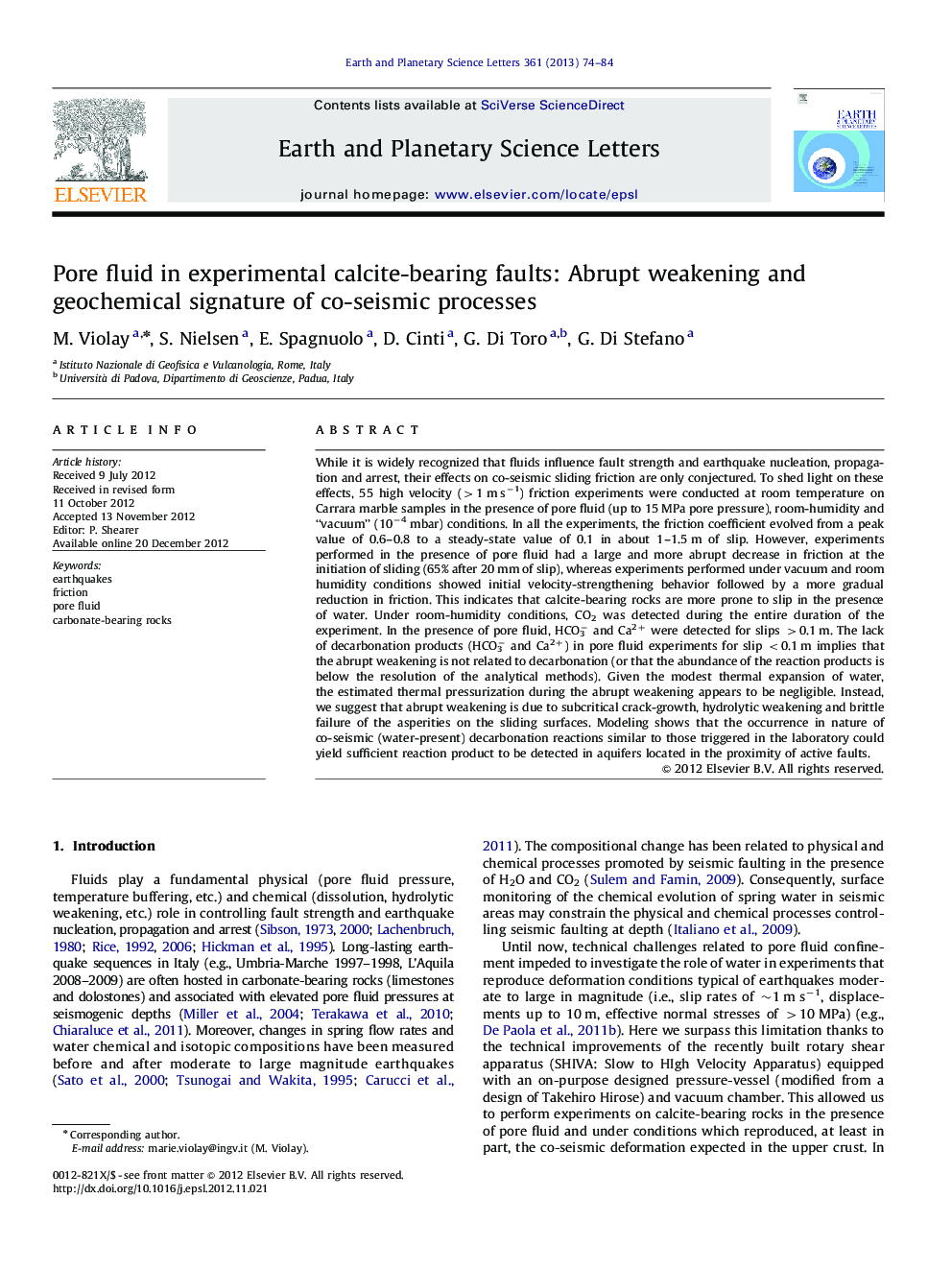| Article ID | Journal | Published Year | Pages | File Type |
|---|---|---|---|---|
| 4677162 | Earth and Planetary Science Letters | 2013 | 11 Pages |
While it is widely recognized that fluids influence fault strength and earthquake nucleation, propagation and arrest, their effects on co-seismic sliding friction are only conjectured. To shed light on these effects, 55 high velocity (>1 m s−1) friction experiments were conducted at room temperature on Carrara marble samples in the presence of pore fluid (up to 15 MPa pore pressure), room-humidity and “vacuum” (10−4 mbar) conditions. In all the experiments, the friction coefficient evolved from a peak value of 0.6–0.8 to a steady-state value of 0.1 in about 1–1.5 m of slip. However, experiments performed in the presence of pore fluid had a large and more abrupt decrease in friction at the initiation of sliding (65% after 20 mm of slip), whereas experiments performed under vacuum and room humidity conditions showed initial velocity-strengthening behavior followed by a more gradual reduction in friction. This indicates that calcite-bearing rocks are more prone to slip in the presence of water. Under room-humidity conditions, CO2 was detected during the entire duration of the experiment. In the presence of pore fluid, HCO3− and Ca2+ were detected for slips >0.1 m. The lack of decarbonation products (HCO3− and Ca2+) in pore fluid experiments for slip <0.1 m implies that the abrupt weakening is not related to decarbonation (or that the abundance of the reaction products is below the resolution of the analytical methods). Given the modest thermal expansion of water, the estimated thermal pressurization during the abrupt weakening appears to be negligible. Instead, we suggest that abrupt weakening is due to subcritical crack-growth, hydrolytic weakening and brittle failure of the asperities on the sliding surfaces. Modeling shows that the occurrence in nature of co-seismic (water-present) decarbonation reactions similar to those triggered in the laboratory could yield sufficient reaction product to be detected in aquifers located in the proximity of active faults.
► First experiments on rocks with pore fluids under co-seismic deformation conditions. ► Calcite-bearing rocks are prone to slip in the presence of pore water. ► Fluids after slip are enriched in Ca2+ and HCO3−. ► Analysis of surface springs may provide insights into seismic faulting processes.
